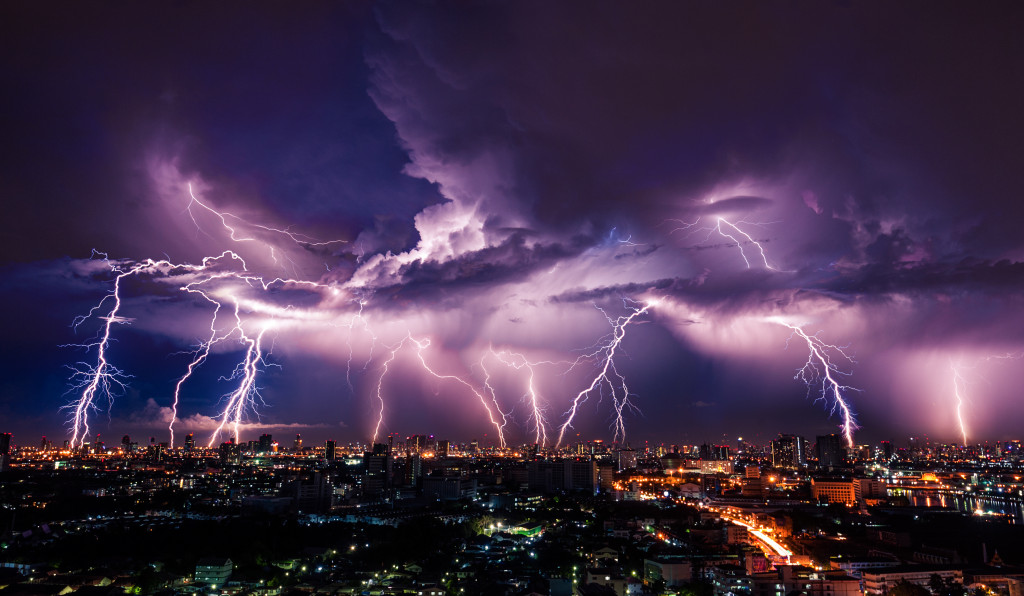Every year, the weather changes, sometimes in most unexpected ways. The weather is not always consistent, which can pose a problem when trying to maintain your home. Many times, homeowners do not know how to react to these changes or what measures they should take when it comes to how they deal with the home.
If you live in an area where there are frequent thunderstorms, for example, have you thought about how those conditions might affect your home? Several unexpected things can happen when there’s too much rain or lightning. This guide will give you some pieces of advice on what to do when it comes to the weather and your home.
Flooding
While flooding is one of the biggest risks people face from excess rain, it’s not just water damage that people have to worry about. When heavy rains hit their property (causing flooding), there’s a chance that the roots in their lawn will be affected, which can lead to issues with fungus and garden pests.
Rot
In addition to root problems associated with flooding, people also have to worry about rot — whether it’s on the interior of their house or outside on plants or trees. It’s important for homeowners who are living in areas where there is a lot of lightning and thunderstorms to think about how they can protect themselves from this weather condition.
For example, you might consider preventative measures such as installing water drainage systems around your home or taking steps against fungus growth. You should also make sure trees near your home aren’t uprooted by strong winds from storms. If you’re not getting enough sleep because of all the thunder and lightning at night, it might be a good idea to use an apnea sleeping device.
Tornadoes
Homeowners in tornado-prone areas need to take measures against home damage when there are strong winds and flying debris that pose a threat to their property. One way they might do this is by installing storm shutters on windows, so they don’t have to worry about them shattering.
When it comes to these three weather conditions, you have to think about the safety of your home and its structure as well as any surrounding plants or trees. If you do live in an area where there’s a lot of lightning and thunderstorms, make sure you take preventive action against home damage by considering your walls, ceilings, and most importantly, your roof.
Roofing that has been damaged by weather conditions, such as hail or strong winds, might not be immediately apparent — but it’s one of the biggest causes of home damage after a storm. If your roof sustains any kind of damage, you’ll need to get new materials and have a contractor perform roof replacement.

Mold Growth
When rainwater accumulates on a roof affected by mold, it can drip through the home’s ceilings and walls. Over time, this repeated seepage undermines the structure of the building. Not only does this rotted wood, plaster, and other materials, it also leaves behind mold spores that are dangerous to the health of residents.
Mold can spread through an entire home in a matter of days if left unchecked. If you’ve noticed signs of mold on your property after a storm — such as black or blue spots on walls. Contact a mold removal service to get rid of the spores.
Excessive Heat
In the summer, when the temperatures are high and humidity is low, storm damage can cause serious problems with your home’s insulation. If you cannot close all the windows in a room without air conditioning, especially in a coastal or mountainous area, there may be a problem with a lack of insulation.
If any gaps in your home’s exterior walls are letting heat through, it can cause your HVAC equipment to work harder and shorter. You should also be concerned about foggy or moisture-covered windows due to the excessive humidity in the air. If you notice any of these issues, contact a contractor who specializes in energy efficiency — they’ll be able to test the strength of your insulation.
Structura’ Damage
After a storm, there is always some risk of structural damage to the exterior of your home, especially in coastal regions where hurricanes are more prevalent. One major issue that can occur is erosion. If you have rocks or stones on any part of your property near the beach, they may be swept away by high waves and strong winds. This causes damage to your building in the form of broken windows.
If your foundation is broken or cracked, this could affect the structural integrity of the home. You should always have an inspection done on your foundation immediately after a storm, especially if you live in an area that’s at risk for hurricanes. This way, there are no surprises about whether your house can handle another storm surge or not.
These are just some risks you might face from weather conditions and what you can do about them. If your property is affected by any of these issues, make sure you contact a home repair and maintenance service immediately.
